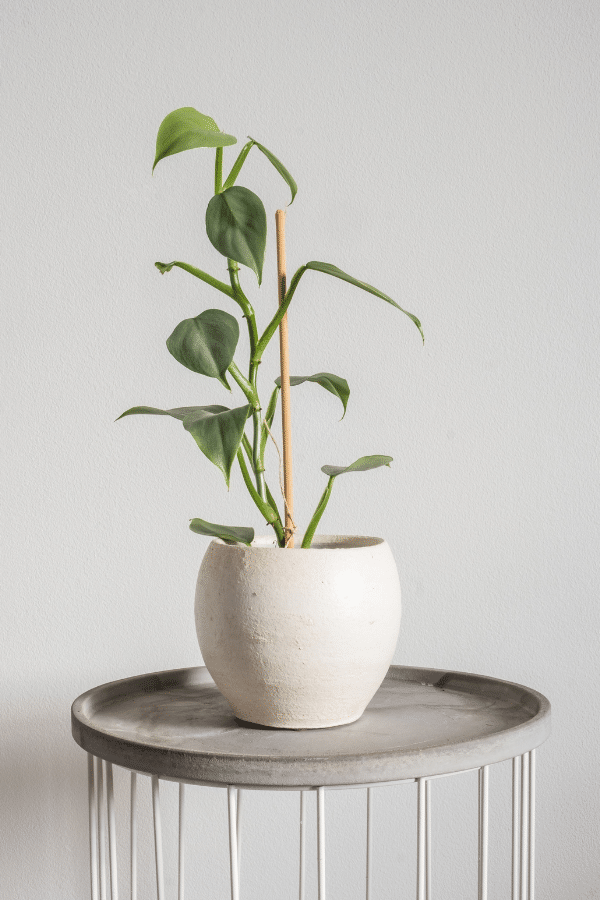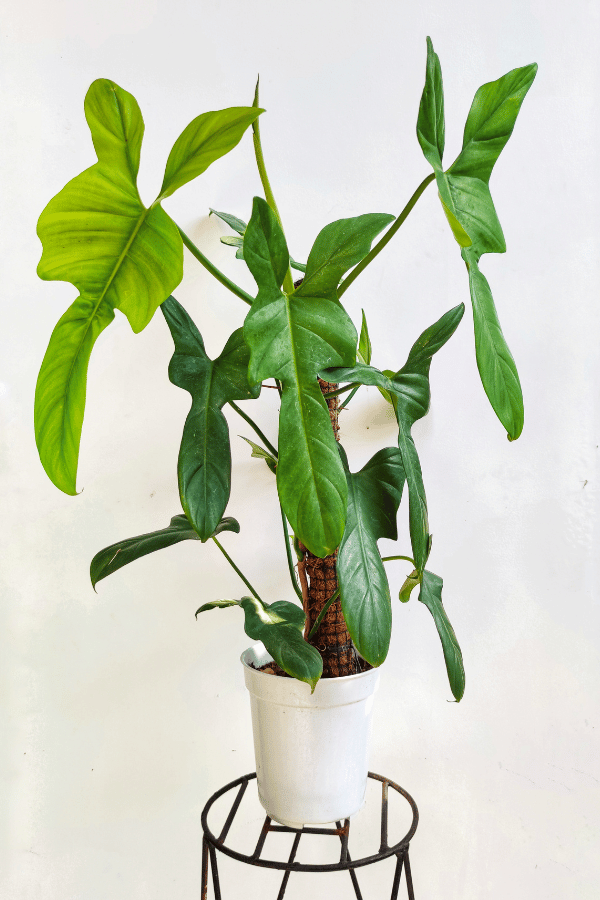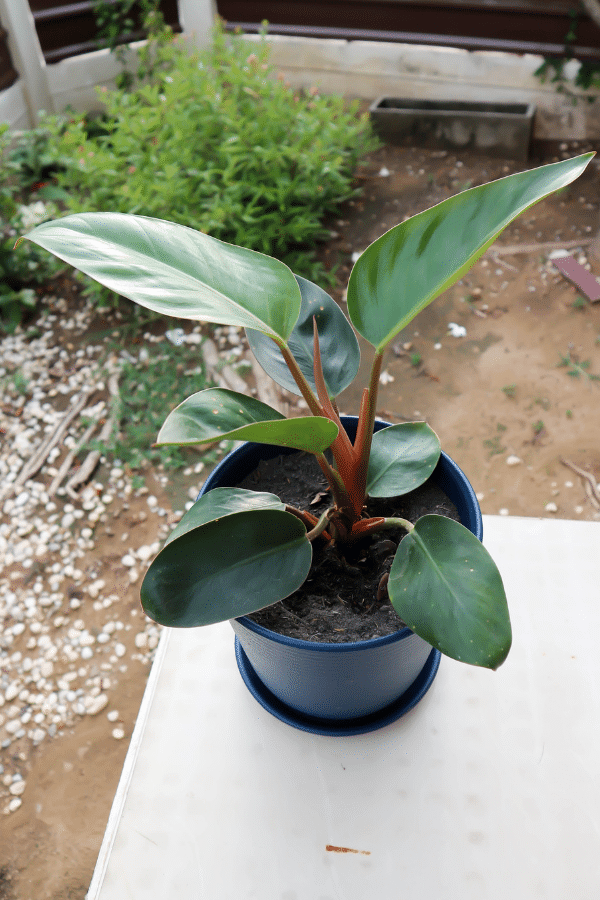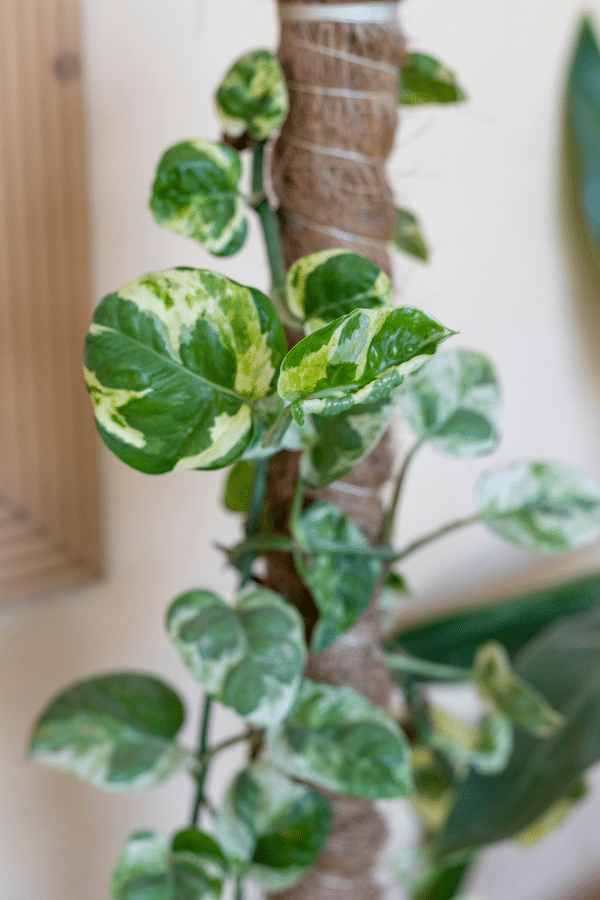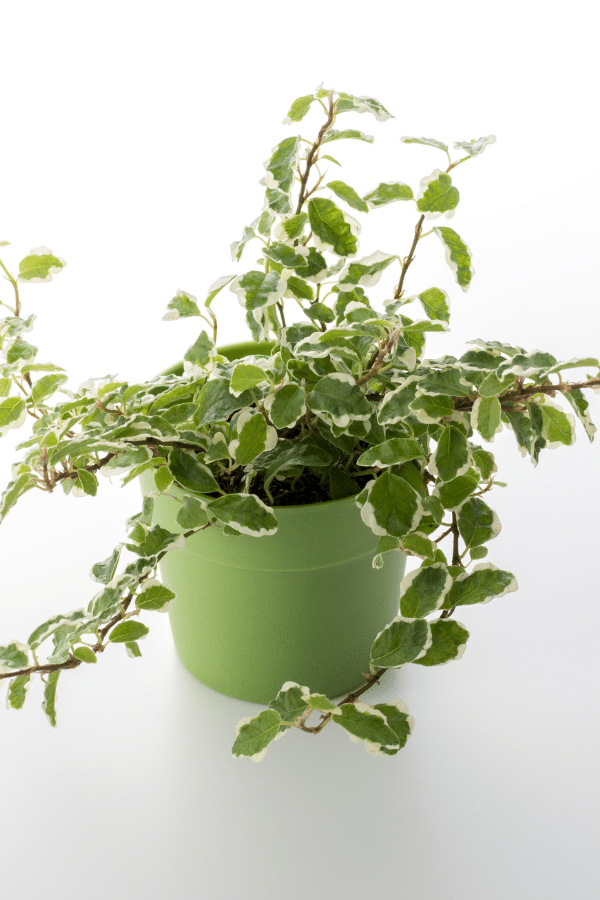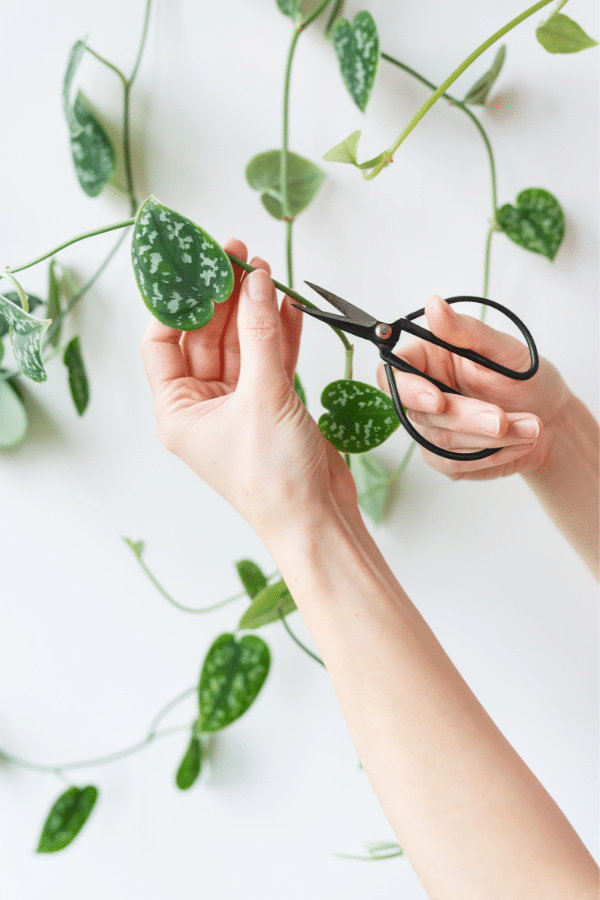Hawaiian Pothos
Hawaiian Pothos care is relatively easy to grow and care for. If you are looking for your first plant, a new plant, or another Pothos, then an Epipremnum Aureum Hawaiian plant may be for you!
Scientific Name: Epipremnum Aureum ‘Hawaiian’
To give Hawaiian Pothos plant the best care, it requires well-draining soil, allow the soil to dry out completely before watering, provide it with bright indirect sunlight, temperatures ranging from 65-75F, and average household humidity levels.
Quick Care Overview
| Common Name | Devil’s Ivy |
| Scientific Name | Epipremnum Aureum Hawaiian |
| Family | Araceae |
| Origin | French Polynesia |
| Growth Rate | Fast |
| Identification | Green leaves with lots of yellow variegation |
| Height | Up to 10 feet tall/in length |
| Soil | Well-draining soil |
| Water | Water when top two inches of soil are dry |
| Temperature | 60-80F |
| Sunlight | Bright indirect light |
| Toxic to Cats & Dogs | Yes |
| Toxic to Humans | Yes |
| Pests | Mealybugs, scale, aphids, spider mites, fungus gnats |
| Diseases | Root rot |
Below we will dive deep into this Hawaiian Pothos care guide.
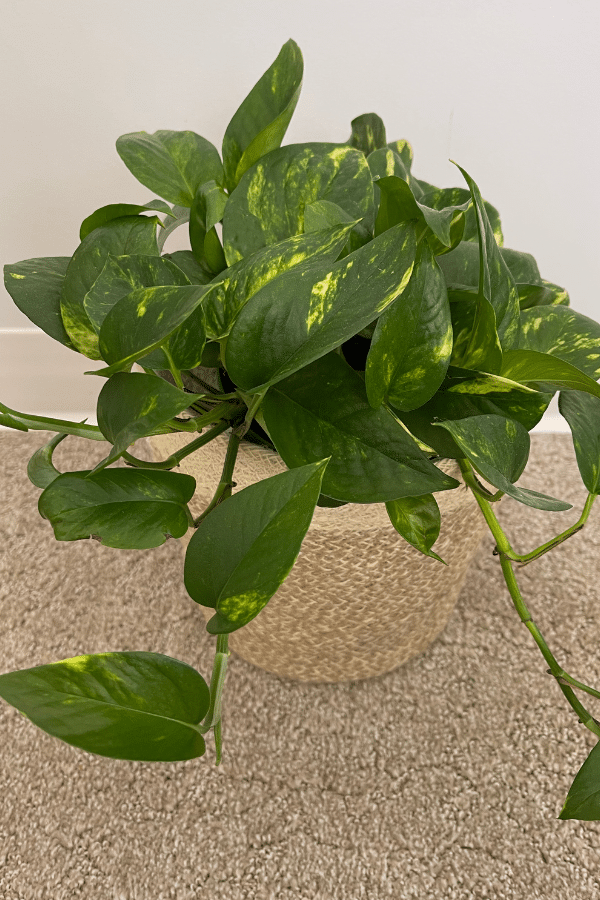
Hawaiian Pothos History
French Polynesia native Epipremnum Aureum Hawaiian, is a beautiful indoor plant that when found in the wild has deep fenestrations and very large leaves. But when grown as a houseplant indoors, the leaves stay smaller.
Hawaiian Pothos Identification
Hawaiian Pothos can often be mistaken for Golden Pothos because of the same green and yellow variegation, its vines, and heart-shaped leaves. However, Hawaiian Pothos has much more variegation to its leaves than the Golden counterpart.
Hawaiian Pothos Growth Facts
This fast-growing plant may grow up to 1 foot a month during the growing season and when it’s given an optimal environment. You can let this plant trail in a hanging basket or you can train it to climb up a moss pole or trellis, where it’s leaves will grow to be a bit larger.
How Big Does a Hawaiian Pothos Get?
Hawaiian Pothos may grow up to 40 feet long and 6 feet wide if not pruned back.
Hawaiian Pothos Care
As an understory plant, Hawaiian Pothos will naturally cling onto trees with their aerial roots and climb to reach the sunlight. Mimicking this natural environment will help the most with understanding how to care for Hawaiian Pothos. Knowing this we know that this plant can do well in low-light and bright light. The brighter the light, the more colorful their variegations will be. Whether you let it trail, climb, or attach it to your walls, this plant will adapt well to your home!
Hawaiian Pothos Soil
Pothos plants are great at adapting to a variety of growing mediums and Hawaiian Pothos is no exception. A potting soil with perlite and coco chips will help this to drain well.
Hawaiian Pothos Fertilizer
Hawaiian Pothos do not need to be fertilized much as they are naturally fast growers. But they are still living things, so giving them a balanced liquid fertilizer a few times a year or every other month will help this plant to grow nicely. Always read the instructions on the label and halt fertilizing in the fall and winter if the plant is not growing.
Hawaiian Pothos Watering
Epipremnum Hawaiian likes to dry out completely between waterings. When you feel that the top two to three inches of soil are dry, it’s time to water. Be sure to use a well-draining soil mix so the plants roots do not get soggy.
Hawaiian Pothos Light Requirements
Lighting conditions and sun exposure are one of the easiest and hardest things to get right with plants. Since this plant grows under the canopy of the rainforest, in its natural habitat it can tolerate low-light conditions. But it will grow the fastest and have more variegation when the plant is given high light, as it climbs trees to reach for the sunlight. Avoid direct sunlight so the foliage does not get burned. So bright light will be best for this plant.
Hawaiian Pothos Temperature & Humidity
Being a tropical plant, Hawaiian Pothos likes to remain above 60 degrees Fahrenheit at all times, but being kept between 60-80 degrees, Fahrenheit is best. Additionally, Pothos plants like average to high humidity and will always appreciate more humidity from a humidifier, but it’s not essential for them to live.
Repotting Hawaiian Pothos
As a general rule of thumb, repotting is needed when you notice roots coming out of the drainage holes. When this happens, repot your Hawaiian Pothos in the next size up, usually a 4″ pot should be repotted in a 6″ pot, and so forth. Make sure the new pot has drainage holes. Give it well-draining soil and a good watering after repotting.
Hawaiian Pothos Maintenance & Pruning
Hawaiian Pothos does not need much maintenance. It can trail or climb as it pleases. If you want it to grow a certain way, then that is when you will need to prune it back. If you decide you want to prune it back, give the stem a little breathing room between the nodes. Pruning is a great opportunity to make some propagations!
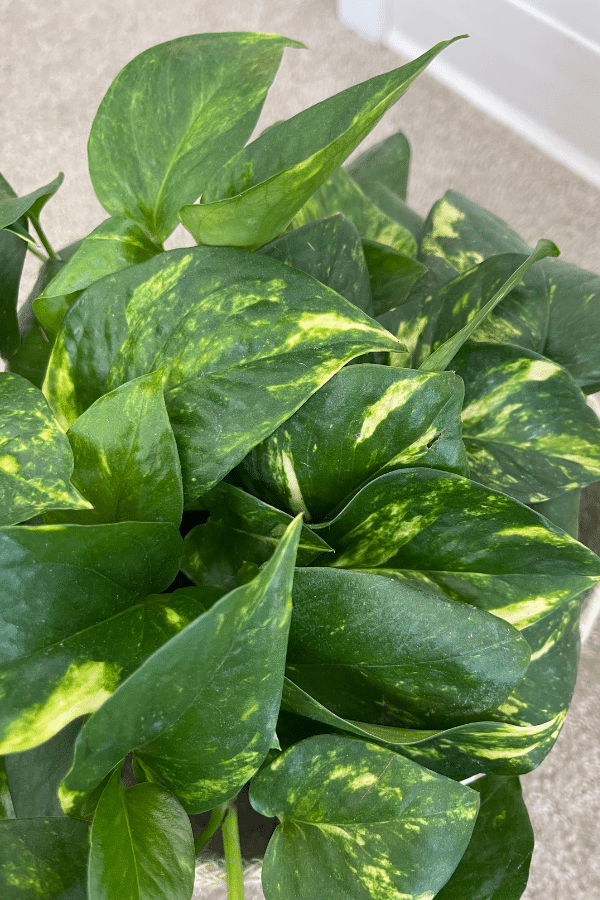
Hawaiian Pothos Propagation
Stem cuttings are the best way to propagate Hawaiian Pothos. Propagations always do best when taken in late spring and early summer. To take a stem cutting, grab a healthy stem. Find the nodes and decide where you want to make a cut. Know that where you make the cut, two stems will grow in its place. Once you know where you want to make the cut, cut above the node with clean sharp scissors.
Place the stem in water with the node in the water, not the leaves. Place it in bright light. Roots should grow within a few weeks, sometimes longer. Once the roots have secondary roots, you can plant the propagations into soil.
Hawaiian Pothos Toxicity
Toxicity to Humans
Hawaiian Pothos is toxic to humans due to its calcium oxalate content. Do not consume this plant and always wash hands after handling.
Toxicity to Cats & Dogs
The Hawaiian Pothos is considered toxic to pets and should never be ingested. Ingestion may lead to oral irritation, burning, drooling, vomiting, and difficulty swallowing. Seek medical attention right away if you suspect your pet has ingested Hawaiian Pothos.

Hawaiian Pothos Problems
Hawaiian Pothos Leaves Turning Yellow
If you notice Hawaiian Pothos leaves turning yellow, it may be a nutrient deficiency, such as magnesium, iron, or manganese or it could be improper moisture levels. If you haven’t given it fertilizer in a while, try that to see if it fixes the problem.
Hawaiian Pothos Leaves Turning Brown
Brown leaves on the Hawaiian Pothos are notoriously known for lower humidity levels or letting the soil dry out too much. Give it a good drink of water and if needed, increase the humidity levels to above 50%.
Hawaiian Pothos Diseases
Golden Pothos may become susceptible to root rot and bacterial leaf spot. Both of these diseases happen in really wet conditions, so make sure to feel the soil before watering.
Hawaiian Pothos Pests
Pothos are generally considered pest-resistant. However, they can become infested with common indoor houseplant insects such as mealybugs, spider mites, aphids, and scale. If infestations are spotted, isolate your plant right away. Soak a cotton swab in rubbing alcohol and remove the bugs you can see. Then, treat it with a pesticide such as insecticidal soap, and do this every week for at least a month until the egg cycle is completed.

